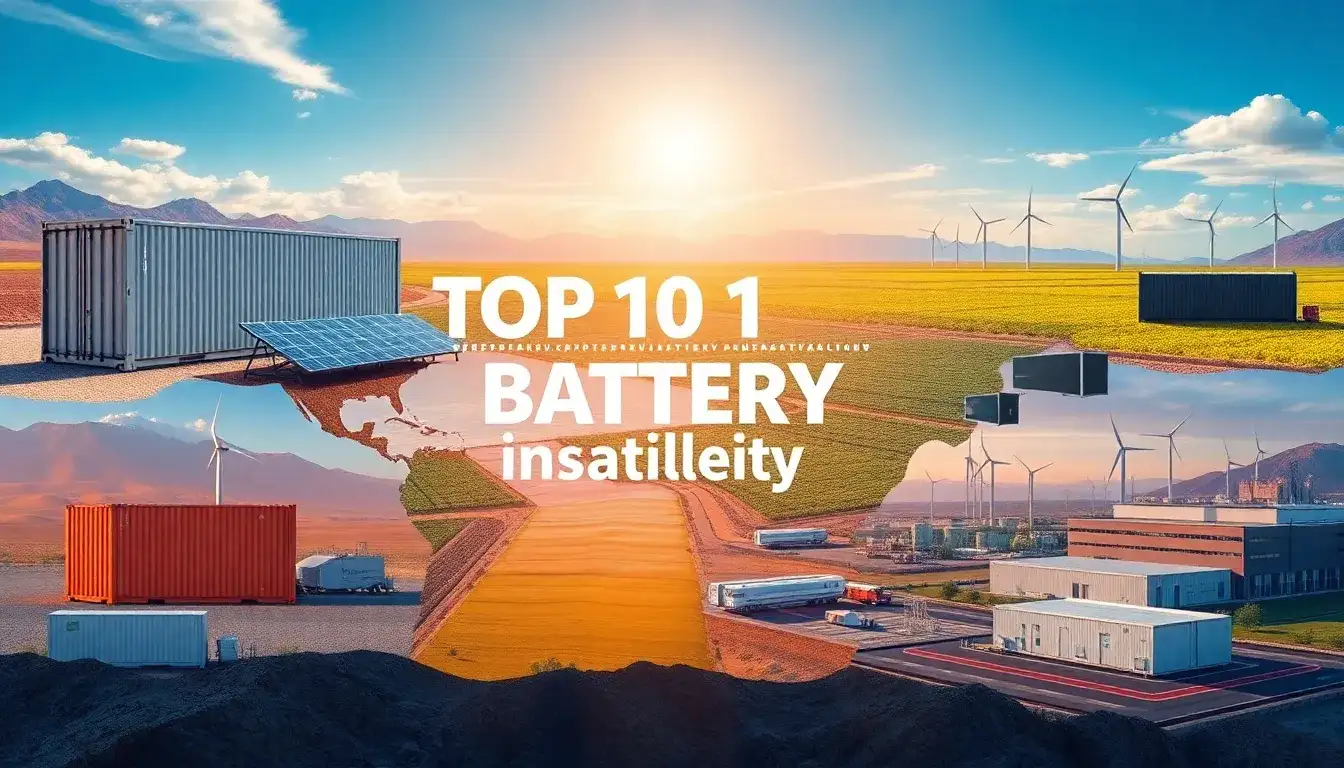
### Top 10 Global Power Battery Installations in January 2025
Recently, the South Korean research firm SNE Research released the latest data on global power battery installations for January 2025. According to the data, approximately 64.3 GWh of batteries were installed in electric vehicles (EVs, PHEVs, HEVs) worldwide in January 2025, marking a 25.7% year-over-year increase.
In terms of market share, six Chinese battery companies remain among the top 10 global power battery installers for January 2025. These companies include Contemporary Amperex Technology Co. Ltd. (CATL), BYD, China Innovation Aviation, Gotion High-Tech, Honeycomb Energy, and EVE Energy. Together, these six companies hold a total market share of 68.1%, up from 67.1% in the previous year.
Notably, CATL installed 25.0 GWh of batteries, experiencing a growth rate of 25.0%, with a slight decline in market share to 38.9%. BYD installed 10.9 GWh, surpassing CATL in growth rate and increasing its market share to 17.0%. LG Energy Solutions installed 6.0 GWh, reflecting a 9.1% year-over-year increase, but its market share dropped to 9.1%. SK On improved its ranking to fourth with an installation volume of 2.9 GWh. Panasonic saw a minor increase, but its market share fell to 3.9%. China Innovation Aviation installed 2.4 GWh, dropping to sixth place. Samsung SDI’s installations decreased by 23.1%, falling to 2.0 GWh. Gotion High-Tech reached 2.2 GWh, moving up to seventh place, while Honeycomb Energy entered the top 10 with 1.9 GWh. EVE Energy’s installations amounted to 1.3 GWh, placing it at the tenth position.
The combined market share of South Korean battery companies LG Energy Solutions, Samsung SDI, and SK On has continued to decline, with a total market share of 16.9% in January, down 3 percentage points from the same period last year. Japanese company Panasonic also experienced a drop in market share.
In terms of year-over-year changes in installation volume, all top 10 companies except Samsung SDI saw positive growth in January 2025. CATL continues to lead globally, achieving a 25.0% increase (25.0 GWh) compared to the previous year. In addition to major OEMs like Zeekr, AITO, Li Auto, and Xiaomi using CATL batteries, leading global manufacturers such as Tesla, BMW, Mercedes-Benz, and Volkswagen also rely on CATL batteries.
BYD ranks second globally in battery usage, with a growth rate of 42.6% (10.9 GWh). By producing both batteries and electric vehicles (BEV + PHEV), BYD has gained significant market acceptance through its strong price competitiveness and a diverse range of electric vehicles. In 2024, BYD’s electric vehicle sales reached approximately 4.14 million units, and the company aims to sell around 6 million new vehicles by 2025. Notably, BYD is expanding its market presence beyond China into Asia and Europe, rapidly increasing its market share.
As for South Korean companies, LG Energy Solutions remains in third place with a year-over-year growth of 10.1% (6.0 GWh). SK On ranked fourth with growth of 35.0% (2.9 GWh), while Samsung SDI’s battery usage decreased by 23.7% (2.0 GWh). The decline in Samsung SDI’s battery usage is largely attributed to reduced demand from major automotive OEMs in Europe and North America.
In 2025, as some countries expand subsidies, signs of recovery in electric vehicle sales are emerging in Europe. In the U.S., although discussions about reducing tax credits are ongoing, a complete cancellation is unlikely. Meanwhile, China continues to see stable growth, despite a temporary slowdown in sales in January due to the Lunar New Year holiday.
With various countries implementing protectionist policies and regulatory changes, the electric vehicle market is expected to undergo structural reshaping, necessitating increased efforts in stabilizing supply chains, investing in emerging markets, and developing next-generation battery technologies. Notably, the three major South Korean battery companies plan to enhance their competitiveness by showcasing cylindrical batteries at exhibitions. Existing NCM (Nickel, Cobalt, Manganese) batteries from these companies lead the market; however, to meet the evolving demands of automakers, they are expanding their product offerings to include LFP (Lithium Iron Phosphate) batteries and other varieties. In addition to their existing pouch cells, these companies are also introducing cylindrical and prismatic batteries, moving towards providing tailored battery solutions for specific customers. These changes reflect a differentiation strategy that focuses on offering customized technological solutions rather than solely competing on chemical performance.







